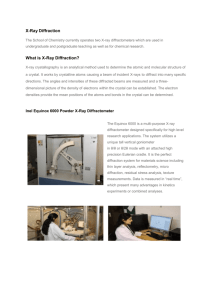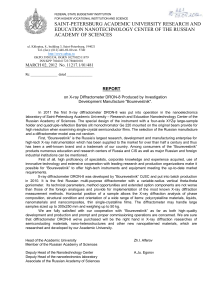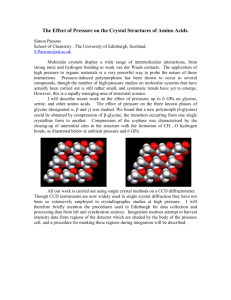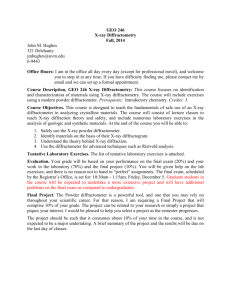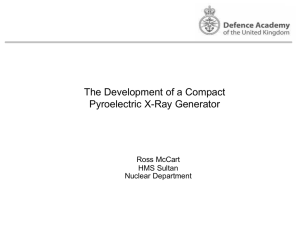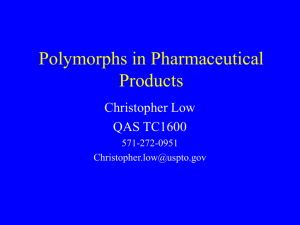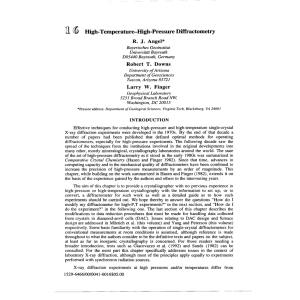National Chemical Laboratory
advertisement
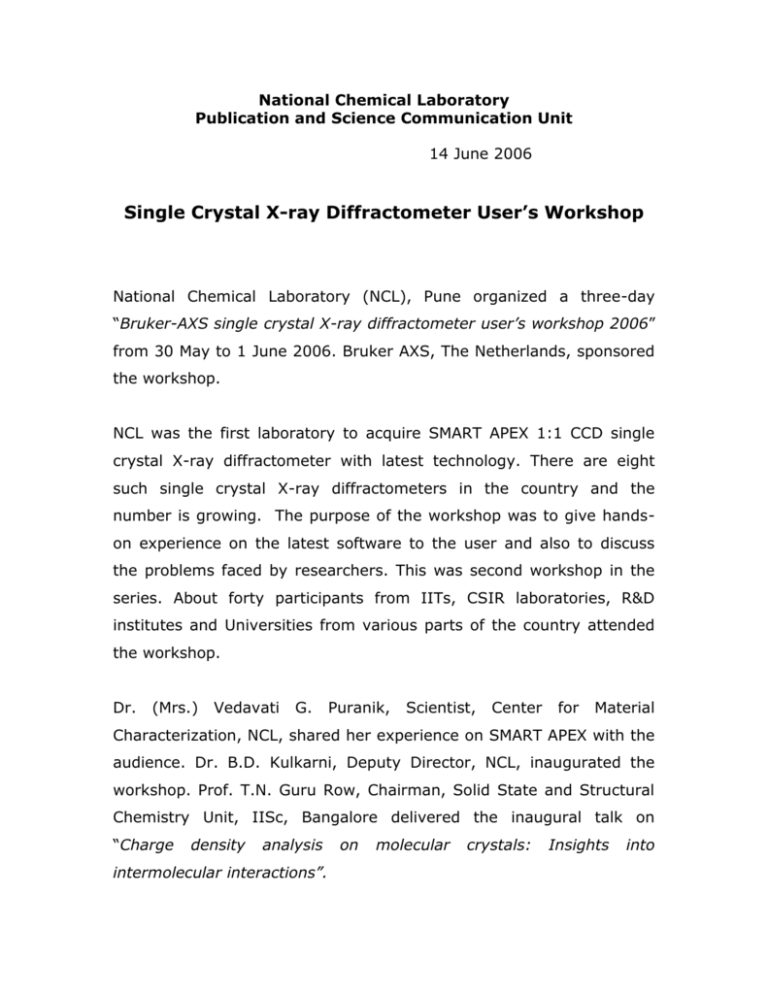
National Chemical Laboratory Publication and Science Communication Unit 14 June 2006 Single Crystal X-ray Diffractometer User’s Workshop National Chemical Laboratory (NCL), Pune organized a three-day “Bruker-AXS single crystal X-ray diffractometer user’s workshop 2006” from 30 May to 1 June 2006. Bruker AXS, The Netherlands, sponsored the workshop. NCL was the first laboratory to acquire SMART APEX 1:1 CCD single crystal X-ray diffractometer with latest technology. There are eight such single crystal X-ray diffractometers in the country and the number is growing. The purpose of the workshop was to give handson experience on the latest software to the user and also to discuss the problems faced by researchers. This was second workshop in the series. About forty participants from IITs, CSIR laboratories, R&D institutes and Universities from various parts of the country attended the workshop. Dr. (Mrs.) Vedavati G. Puranik, Scientist, Center for Material Characterization, NCL, shared her experience on SMART APEX with the audience. Dr. B.D. Kulkarni, Deputy Director, NCL, inaugurated the workshop. Prof. T.N. Guru Row, Chairman, Solid State and Structural Chemistry Unit, IISc, Bangalore delivered the inaugural talk on “Charge density analysis intermolecular interactions”. on molecular crystals: Insights into In his inaugural address Prof. Guru Row spoke about one-electron properties, intermolecular interactions in terms of the atoms in molecule, visualizing mapping electron densities etc. He explained the possibility of collecting the precise and accurate data at low temperature with the help of SMART APEX single crystal X-ray diffractometer. He elaborated the use of “atom in molecule” approach with special emphasis on improvements in charge density models. He also illustrated the developments in both experimental and theoretical techniques to interpret and analyze the nature of weak intermolecular interactions. He also showed the appearance of a "region of overlap" to segregate hydrogen bonds from van der Waals interactions based on the criteria proposed by Koch and Popelier. He gave the examples of coumarin and its derivatives for identifying differences in energy surfaces in concomitant polymorphs. In another invited talk, Prof. A. Nangia, School of Chemistry, Central University, Hyderabad spoke on “Conformational, concomitant polymorphs: Multiple molecules, kinetic and thermodynamic factors, and polymorph control”. Starting with the importance of polymorphism in organic crystals and pharmaceuticals, Prof. Nangia discussed different types of polymorphism and methods of establishing it. He elaborated on the Host-Guest inclusion compounds, H-bonding and intermolecular interactions and how they can be different in different polymorphs. Usefulness of various methods like Powder X-ray, TGA and DSC to identify different types of polymorphs was shown with the help of experiments carried out in his lab. He touched upon the controversy in naming solvated crystals and pseudopolymorphs. He also showed the fundamental understanding of crystallization and new pharmaceutical phases. The hands-on training using latest software was organized at the computer laboratory of Digital Information Resource Center of NCL. Dr. Leo Starver, Application Scientist of Bruker-AXS B. V., The Netherlands conducted the training programme.
